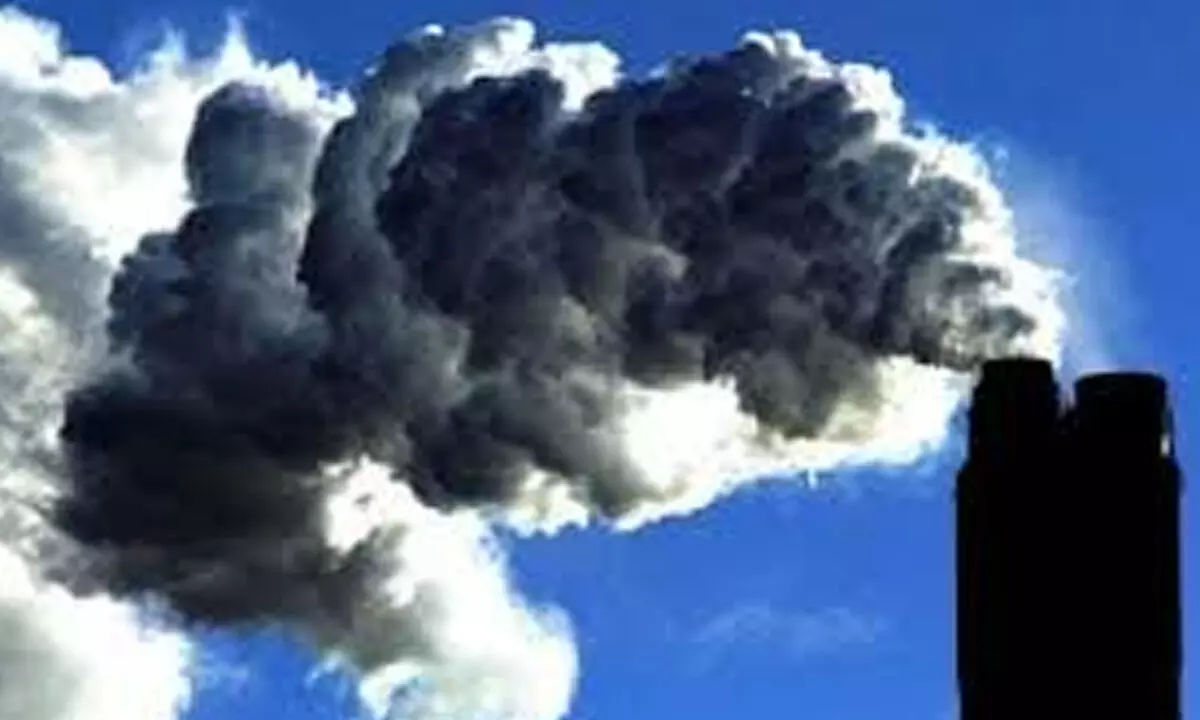Record rise in GHGs, worries WMO

The concentration of heat-trapping greenhouse gases in the atmosphere once again hit a new record last year and there appears to be no halt to this escalating trend, according to a new report by the World Meteorological Organisation (WMO).
New Delhi: The concentration of heat-trapping greenhouse gases in the atmosphere once again hit a new record last year and there appears to be no halt to this escalating trend, according to a new report by the World Meteorological Organisation (WMO).
The global averaged concentrations of carbon dioxide (CO2), considered the most critical greenhouse gas, were a staggering 50 per cent above the pre-industrial era (1850-1900) in 2022 for the first time. These levels have continued to escalate in 2023, it said. The WMO’s Greenhouse Gas Bulletin noted that although the growth rate in CO2 concentrations was slightly lower than the preceding year and the decade’s average, this decline was likely due to short-term variations in the carbon cycle.
The report highlighted that new emissions from industrial activities continued to rise. Methane concentrations also grew, and levels of nitrous oxide, the third main gas, saw the highest year-on-year increase on record from 2021 to 2022, according to the Greenhouse Bulletin, which is published to inform the United Nations Climate Change negotiations, or COP28, in Dubai.
WMO Secretary-General Petteri Taalas expressed concern, stating, “Despite decades of warnings from the scientific community, thousands of pages of reports, and dozens of climate conferences, we are still heading in the wrong direction.” “The current level of greenhouse gas concentrations puts us on the pathway of an increase in temperatures well above the Paris Agreement targets by the end of this century. This will be accompanied by more extreme weather, including intense heat and rainfall, ice melt, sea-level rise and ocean heat and acidification. The socioeconomic and environmental costs will soar.. We must reduce the consumption of fossil fuels as a matter of urgency,” Taalas said.
Nearly half of CO2 emissions remain in the atmosphere, with just over one-quarter absorbed by the ocean and just under 30 per cent by land ecosystems like forests, although significant variability exists year-to-year. As long as emissions continue, CO2 will continue accumulating in the atmosphere leading to global temperature rise. Given the long life of CO2, the temperature level already observed will persist for several decades even if emissions are rapidly reduced to net zero. The last time the Earth experienced a comparable concentration of CO2 was 3-5 million years ago, when the temperature was 2-3 degrees Celsius warmer and sea level was 10-20 metres higher than now. “There is no magic wand to remove the excess carbon dioxide from the atmosphere. But we have the tools to strengthen our understanding of the drivers of climate change through WMO’s new Global Greenhouse Gas Watch. This will greatly improve sustained observations and monitoring to support more ambitious climate goals,” Taalas said.
The (NOAA) Annual Greenhouse Gas Index (AGGI) shows that from 1990 to 2022, the warming effect on our climate – called radiative forcing - by long-lived greenhouse gases increased by 49 per cent, with carbon dioxide accounting for about 78 per cent of this increase. Carbon dioxide is the single most important greenhouse gas in the atmosphere, accounting for around 64 per cent of the warming effect on the climate, mainly because of fossil fuel combustion and cement production. The slight decrease in the 2.2 parts per million (ppm) increase in the annual average from 2021 to 2022 was possibly due to increased absorption of atmospheric CO2 by terrestrial ecosystems and the ocean following several years with a La Nina event.
The emergence of an El Nino event in 2023 could thus impact greenhouse gas concentrations. Methane, a potent greenhouse gas, remains in the atmosphere for around a decade, accounting for about 16 per cent of the warming effect of long-lived greenhouse gases. Around 40 per cent of methane emissions originate from natural sources like wetlands and termites, while about 60 per cent come from anthropogenic sources such as ruminants, rice agriculture, fossil fuel exploitation, landfills, and biomass burning.
The increase in methane levels from 2021 to 2022 was slightly lower than the record observed from 2020 to 2021 but significantly higher than the average annual growth rate over the last decade. Nitrous Oxide (N2O) serves as both a potent greenhouse gas and an ozone-depleting chemical, accounting for about 7 per cent of the radiative forcing by long-lived greenhouse gases. Approximately 60 per cent of N2O emissions come from natural sources, including oceans, soils, and biomass burning, while around 40 per cent result from anthropogenic sources such as fertilizer use and industrial processes. The increase in N2O levels from 2021 to 2022 surpassed any previous observation in our modern record.














